 Drying Technology
Drying Technology
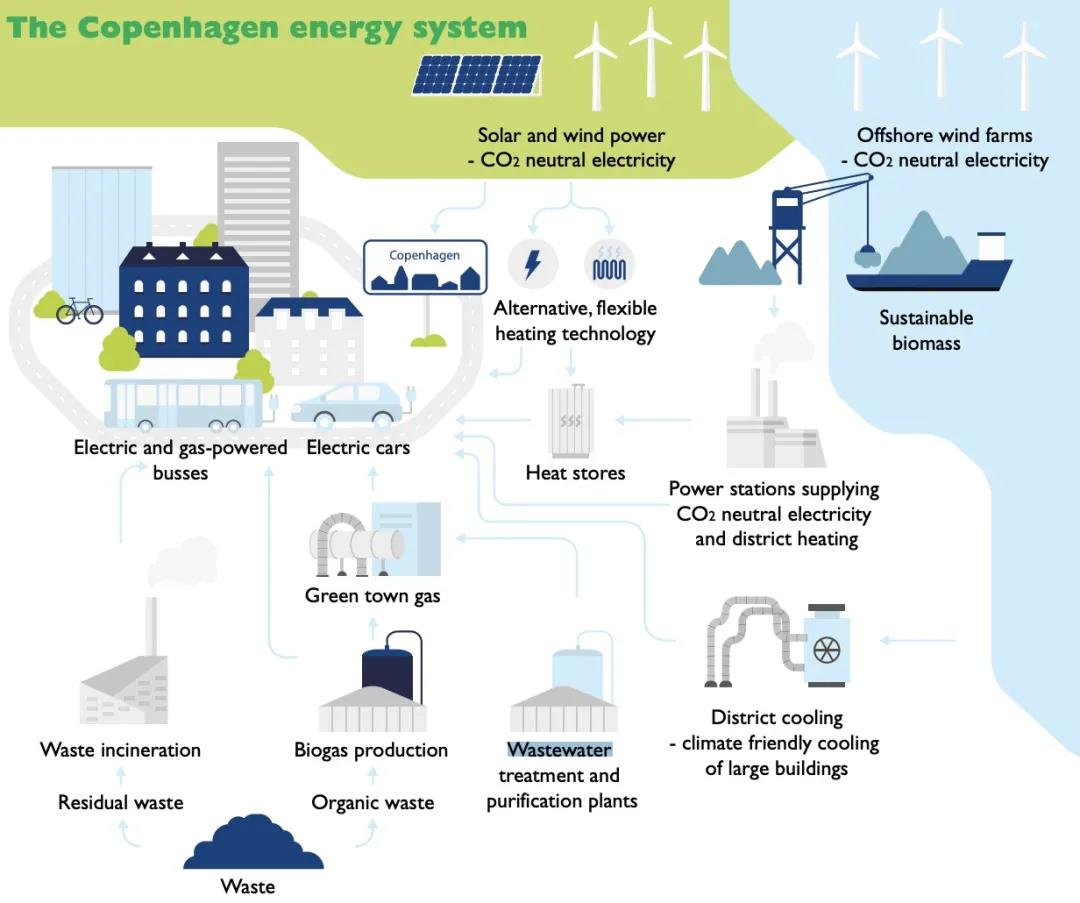
Distribution map of Copenhagen energy system | Source: Copenhagen City Hall
In November 2019, the Danish government signed a "Danish climate partnership" with 13 business representatives, which basically covers the greenhouse gas emissions of all industries in Denmark. The members of the Climate Partnership need to provide emission reduction recommendations in their respective fields to help the Danish government realize its 2030 commitment-that is, Denmark’s greenhouse gas emissions in 2030 will be reduced by 70% compared to the 1990s. Waste, water and circular economy are representative members.
Data show that the CO2 emission equivalent of the Danish taxation department in 2017 was 218,000 tons. Their plan is to achieve a carbon surplus by 2030 through a series of measures.
This plan includes the reduction of direct and indirect emissions. Direct emissions are mainly to reduce N2O and methane emissions, improve the energy efficiency of the process, and increase the production of biogas. Measures to improve indirect emissions mainly refer to improving the utilization rate of effluent waste heat and afforestation.
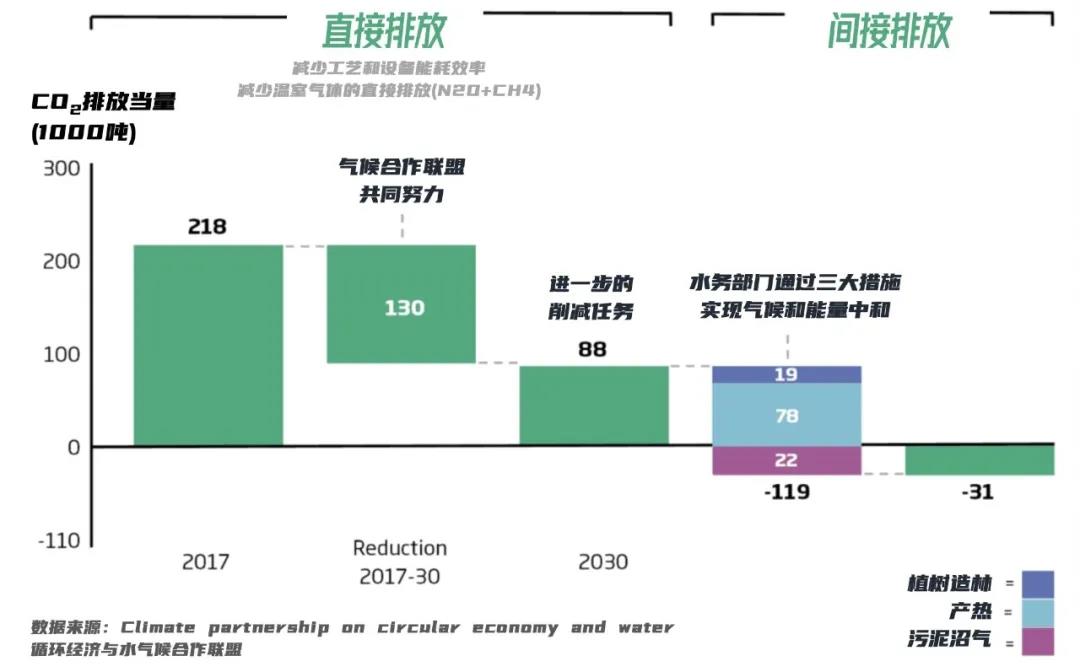
Danish Climate Alliance's emission reduction plan between 2017 and 2030 | Source: stateofgreen
How do wastewater treatment plants in Denmark respond?
Let's take a look at the progress of its three major water companies in recent years.
In 2019, under the initiative of Aarhus Water, an organization called the Danish Water Cluster was born. They claim that this is an organization that gathers advanced Danish water technologies and exports their new water creation solutions to the world. A more important role of this organization is to promote positive competition among members. The three major Danish water companies have all built their own energy recovery sewage plant demonstration projects.
Aarhus Water
Aarhus is the second largest city in Denmark, and Marselisborg is the largest sewage plant in the area. After the International Energy Agency (IEA) released the "World Energy Outlook 2016" in 2016, the wastewater treatment plant became famous because it announced that it did not need to digest together and used only the energy contained in the wastewater itself to achieve an energy surplus.
For this day, Aarhus Water has prepared for ten years: in 2006 they decided to merge the local 14 sewage treatment plants and reduce them to four, and finally reduced to two, namely the Marselisborg sewage plant and the Egaa sewage plant more than ten kilometers away.
The sewage in Copenhagen is mainly handled by BIOFOS, which is responsible for the three sewage plants in Lynetten, Avedøre and Damhusåen, with a treatment scale of about 2 million people equivalent.

Lynetten, Denmark's largest sewage plant | Source: State of Green
These three sewage plants are equipped with sludge anaerobic digestion, with a total treatment capacity of about 60,000m³. In addition, Lynetten and Avedøre sewage plants also have sludge incineration equipment, of which Lynetten has 14,492 tons/year (2017 data, the largest scale). After digestion and incineration, the sludge of the sewage plant generates renewable energy such as natural gas, district heating and electricity.
Since 2014, the sewage plants operated by BIOFOS have achieved an energy surplus. Today, BIOFOS has an annual sewage treatment capacity of 120 million m3, and the energy cost of treatment is 59.5MWh, but the energy sold is as much as 103MWh, and the energy surplus rate is 73%.
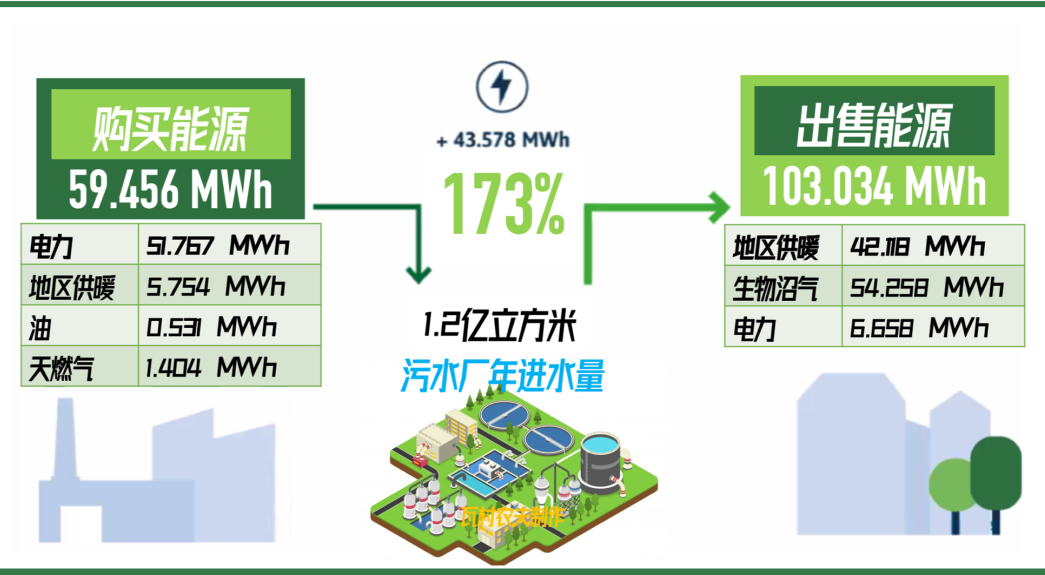
BIOFOS achieves energy surplus | Data: BIOFOS / Design: Wa Village Farmer
In addition to the anaerobic digestion of sludge, BIOFOS has also carried out other transformations in its wastewater treatment plant, such as upgrading surface aeration to microporous aeration (approximately 57% reduction in energy consumption); or installing photovoltaic solar panels (at Damhusåen wastewater treatment plant), Covers part of the power consumption of the plant (9%); they also participate in the innovative resource recovery project (BioCat), in the Avedøre sewage treatment plant to try to convert CO2 into CH4, to further improve the utilization rate of biogas. They are also investigating the feasibility of using high-temperature and high-pressure thermal cracking technology to recover biofuels from sludge.
The average treatment capacity of the Marselisborg wastewater treatment plant is 27,500m³/day. After years of optimization, in 2014, the sewage treatment plant was able to meet the energy consumption of the plant area through biogas cogeneration without adding external organic waste, and there was even a power surplus of about 40%. In 2015 this figure rose to 50%. In other words, the water plant of Aarhus Water has achieved true energy neutralization.
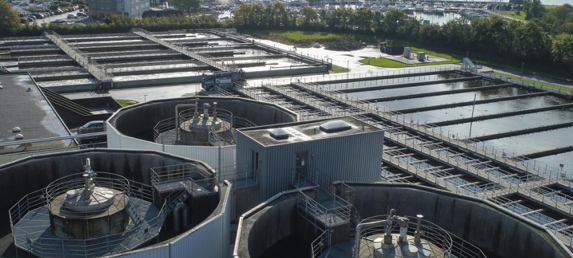
Marselisborg Wastewater Treatment Plant | Source: Aarhus Water
Obviously, it is impossible to achieve energy surplus by relying on traditional anaerobic digestion alone. Let's take a look at their comprehensive optimization work:
The sewage treatment plant first spent 400,000 euros to install the SCADA system (data acquisition and monitoring control system) to monitor the concentration of ammonia nitrogen and phosphorus, and install frequency converter control for blowers, lifting pumps, mixing equipment and dehydration pumps, which greatly reduced electricity It can adapt to the daily changing water load flexibly.
In terms of sludge treatment, the wastewater treatment plant introduced a side-stream anaerobic ammonia oxidation process in 2014, with an investment cost of about 400,000 Euros. According to Per Overgaard Pedersen, chief engineer of Aarhus Water, because this system can reduce the total nitrogen in the sewage plant's effluent by 2mg/L, it can save about 80,000 euros in sewage tax every year. In addition, the energy-saving anammox process also saves 50,000 kWh of electricity consumption in the sewage plant every year. Since then, the newly purchased sludge dewatering centrifuge is more energy efficient, saving 50,000 kWh of electricity consumption in the plant every year, and the sludge can be used as fertilizer for agricultural use after treatment.
In addition to throttling, Aarhus Water also knows how to increase revenue: In order to improve biogas power generation, they spent 1.7 million euros and purchased two 250kW and one 355kW cogeneration motors.
After a series of optimization measures, the annual power consumption of the wastewater treatment plant has saved about 1 million kWh (1GWh). Between 2005 and 2016, the power consumption of the wastewater treatment plant has dropped from 4.2GWh to 3.15GWh, a decrease of one-quarter per ton. The energy consumption of water is reduced to 0.25kWh/m³.
On the other hand, the total power output of the sewage plant in 2016 reached 4.8GWh, which means that the power generation of the plant is 53% more than the power consumption. This excess power will be sold to the national grid, and there is more than 2.5GW of surplus The heat energy is directly used for district heating.
The entire project cost them about 3 million euros, 90% of which had to be paid out of their own pockets, and the city government only funded 10%. However, Mr. Pedersen, the chief engineer of Aarhus Water, calculated the accounts for us, saying that this investment would be able to pay back in less than 5 years: because the waste heat and electricity can be sold for 326,000 euros a year, energy saving investment can save 206,000 yuan year-on-year. Taxes can save another 80,000 per year. This calculation can save more than 600,000 euros a year compared to before the transformation. What makes Aarhus Water Company the most proud of is that the ultimate beneficiaries of this upgrade project are local citizens, because the water company's operating costs have been reduced, which means that the water price can also be lowered!
Overview of energy consumption improvement measures for Marselisborg wastewater treatment plant:
SCADA online control aeration, ammonia nitrogen, nitrate nitrogen and phosphorus, and control the nitrification/denitrification process;
Use turbo compressor to replace high vacuum turbo blower to improve aeration efficiency;
Use a more energy-efficient sludge dewatering centrifuge(AlfaLaval G3);
Newly purchased biogas gas turbine cogeneration(CHP);
The sludge line introduces the anammox process, and the mainstream line is also tested for anammox process.
Aarhus Water's ambitions don't stop there: they have given the Marselisborg sewage plant a new name, called Aarhus Rewater, and are considering the possibility of rebuilding the new plant. On the other side, the Egaa sewage plant also plans to achieve an energy surplus, where they test carbon capture, mainstream anaerobic ammonia oxidation, ORC waste gas energy recovery and other processes, and investigate the feasibility of using these technologies in future sewage plants.
Odense is the third largest city in Denmark and the birthplace of the famous fairy tale writer Andersen. The city’s largest Ejby Mølle sewage treatment plant is also somewhat fairy tale-as early as 2013 it claimed to be 100% self-sufficient in energy. In 2018, they even announced that the energy consumption surplus rate of the sewage plant was as high as 88%! How did they do that?
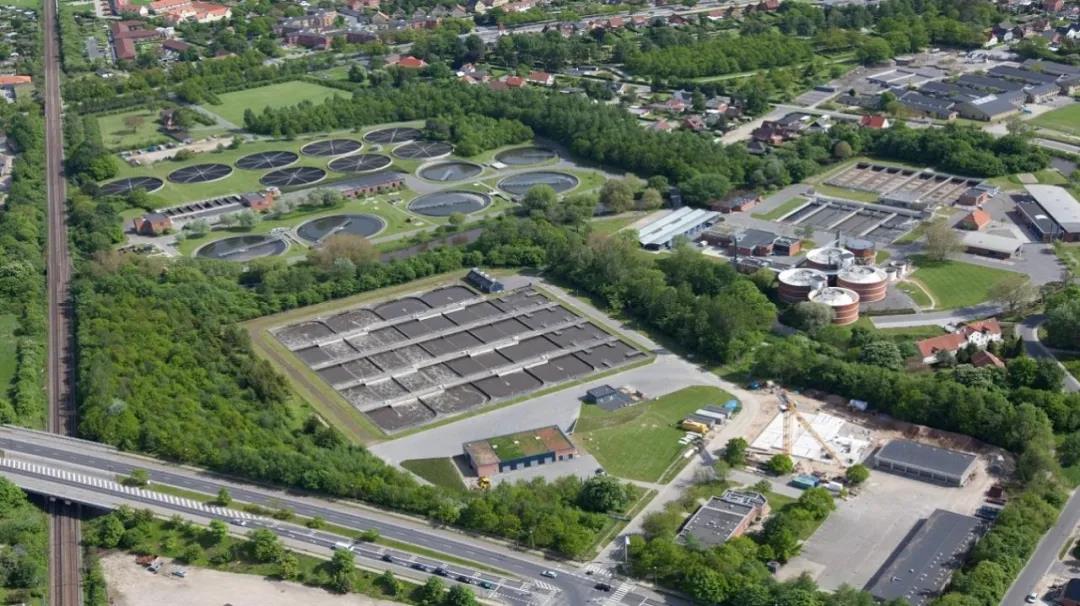
Ejby Mølle Wastewater Treatment Plant | Source: VCS Denmark
The Ejby Mølle sewage plant is operated by the local water company VCS. Like the Marselisborg Sewage Plant, cogeneration based on anaerobic digestion is of course its basis, but the secret of their success lies in the details. For example, they used the delayed digestion method (Torpey process) to separate the solid and liquid from the sludge. Reflux to the digestion tank to reduce the amount of water in the digestion tank, thereby increasing the biomass concentration, extending the SRT by about 10%, and improving the high performance of the digestion tank.
VCS Water is also not satisfied with energy surplus, they are still looking for space to increase production capacity. For example, they renovated the water inlet, equipped the grit tank with more energy-efficient fans, and also designed a new control strategy, which will save 31,000 kWh of electricity consumption per year in the grit tank alone (2021 prediction). In addition, they also replaced the screening washing press to better divert the carbon source trapped by the grid into the digester.
In 2020, despite the impact of the epidemic, the sewage treatment plant did a lot of work: for example, in the summer, they tested the effect of adding ferric chloride to the sludge dewatering process, with the purpose of reducing the amount of residual sludge and the precipitation of struvite. In addition, they are also testing new polymers in the primary sedimentation tank.
In short, they are thinking of ways to send the influent carbon into the digestion tank, and they have such an amazing energy recovery rate of 188%!
This is a sewage plant with a history of 113 years, but it has been continuously upgraded. At that time, they had already used the sludge thermal hydrolysis technology, and they were also Practice DEMON's side-stream anammox. Recently, they also installed N2O sensors in the bioreactor to detect the concentration of greenhouse gases in real time.